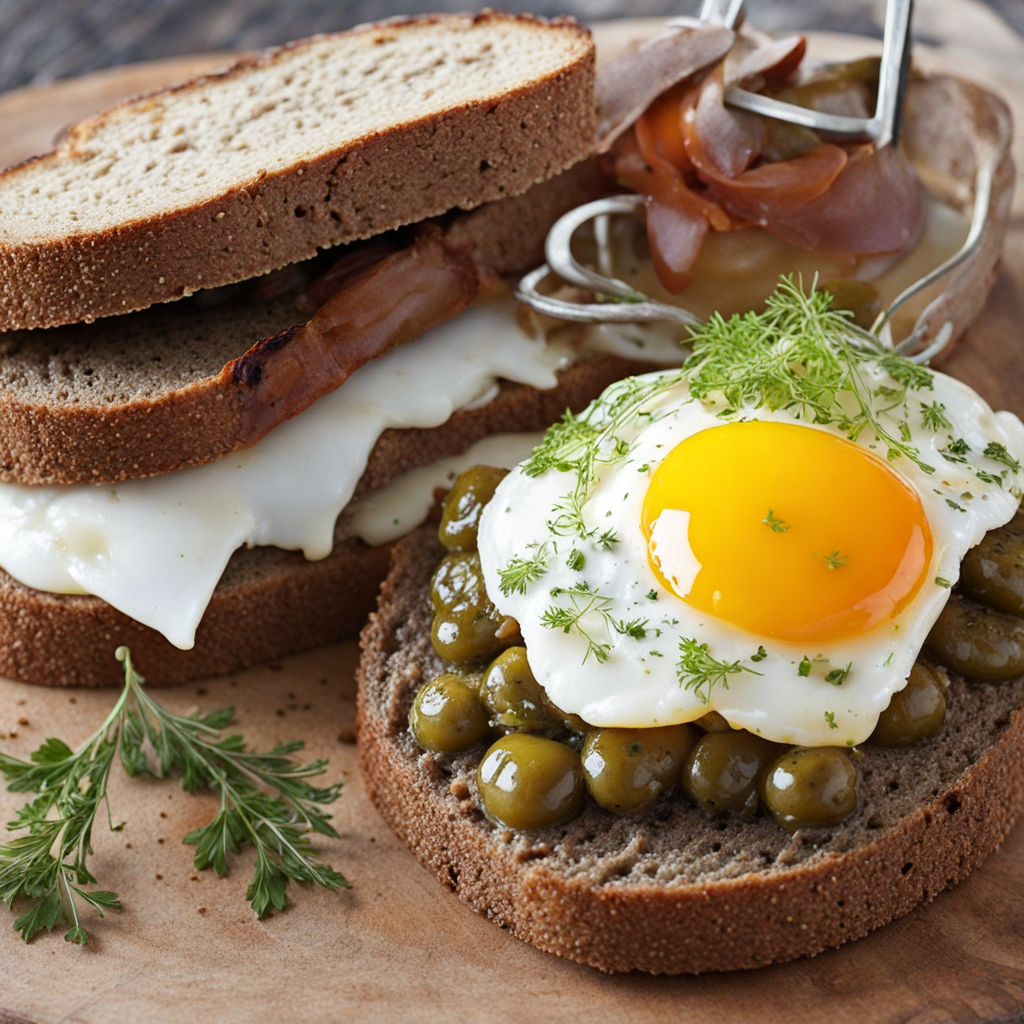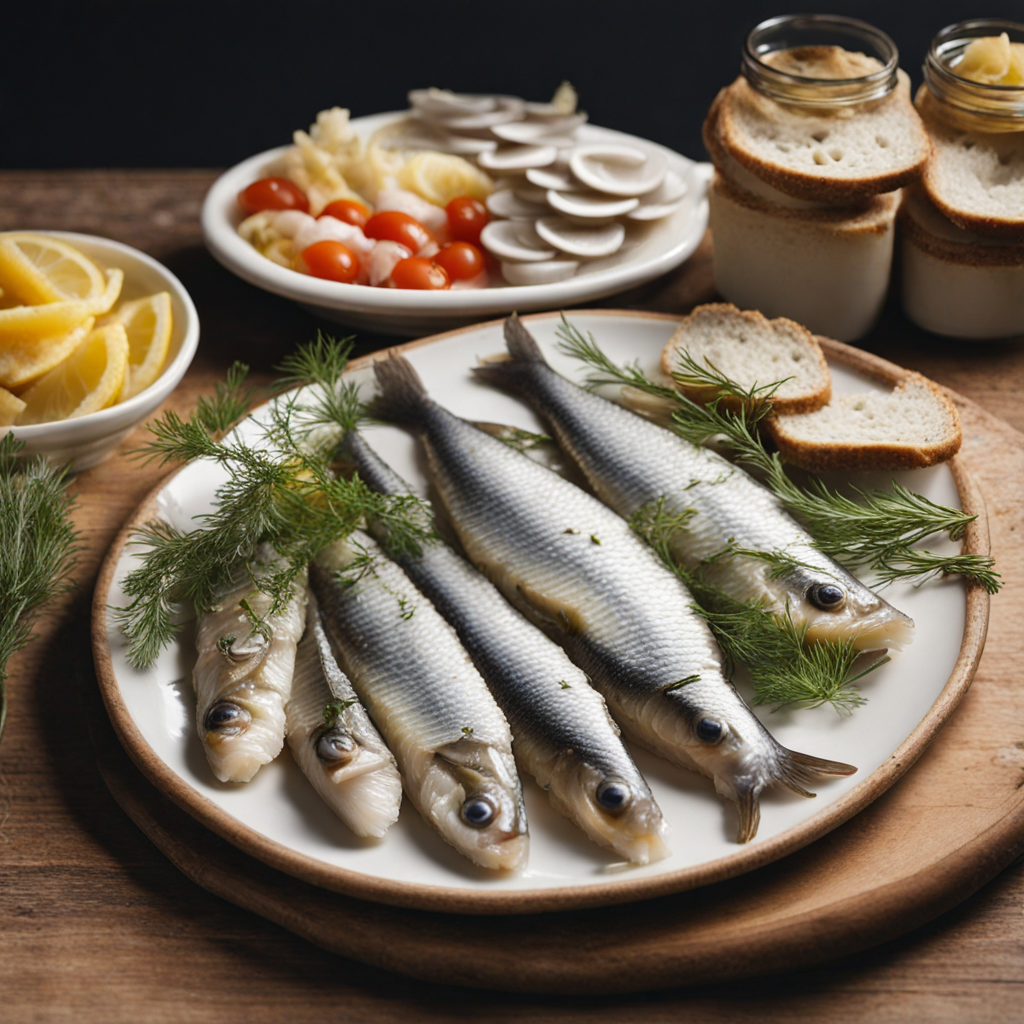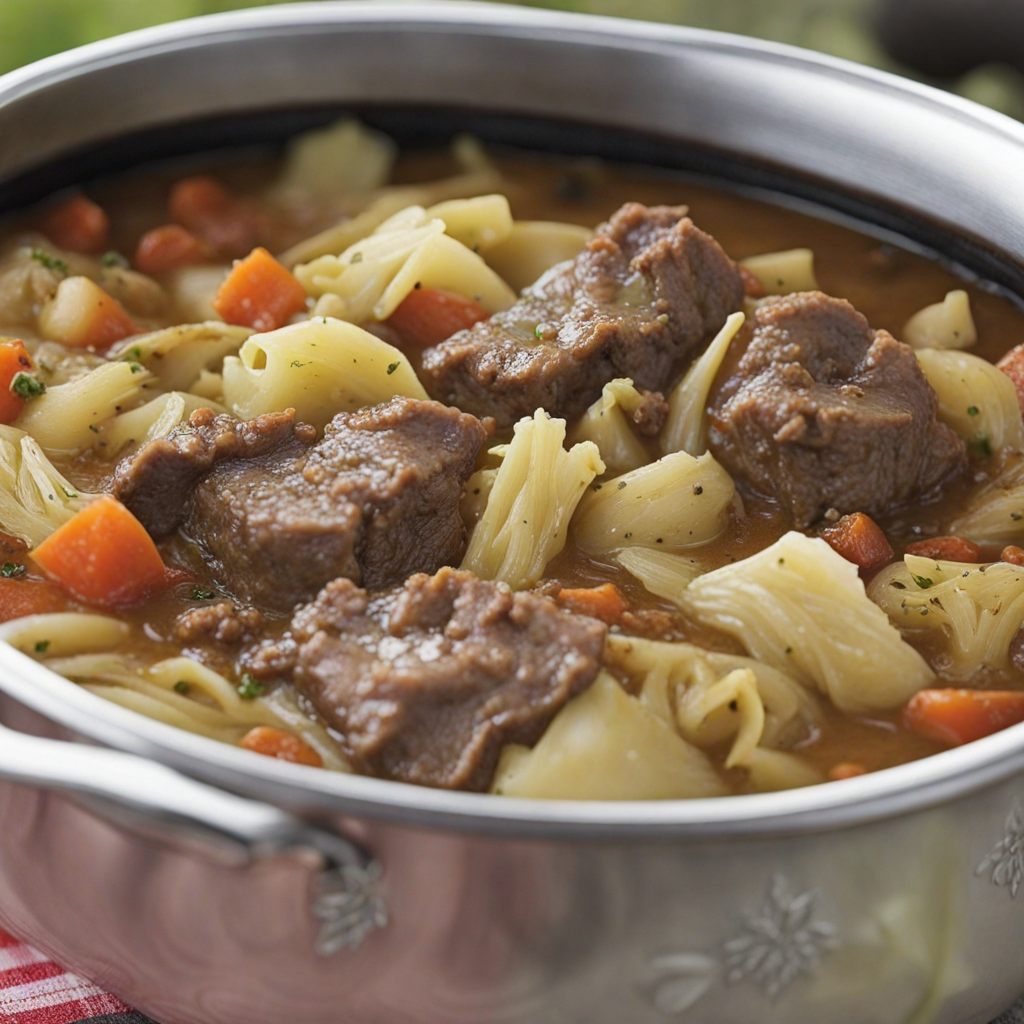Pariserbøf
Pariserbøf is a classic Danish dish that beautifully showcases the simplicity and richness of Scandinavian cuisine. Typically made with a juicy beef patty, the dish is often seasoned to perfection and grilled or pan-fried until it reaches a delightful medium-rare. The beef is usually supplemented with a generous layer of creamy, tangy remoulade, which adds a burst of flavor that complements the meat beautifully. To elevate the dish further, a fried egg is often placed on top, creating a luscious, runny yolk that seeps into the beef and sauce, enriching every bite with a silky texture and a savory depth. The presentation of Pariserbøf is as appealing as its taste. The patty is often served on a bed of crispy lettuce, accompanied by fresh slices of tomatoes and onions that add a refreshing crunch. The vibrant colors of the vegetables contrast nicely with the rich beef and creamy sauce, making it not only a feast for the palate but also for the eyes. Danish rye bread, or rugbrød, is commonly served on the side, providing a hearty base that perfectly complements the flavors of the dish. This dish is a beloved staple in Danish cuisine, often enjoyed in restaurants or as a comforting homemade meal. Pariserbøf offers an inviting combination of textures and flavors, making it a delightful experience for anyone looking to explore the unique tastes of Denmark. Whether you’re a seasoned food lover or a curious newcomer, indulging in Pariserbøf is a delicious way to dive into the heart of Danish culinary traditions.
How It Became This Dish
The History of Pariserbøf: A Danish Culinary Delight #### Origins and Early History Pariserbøf, a beloved dish in Denmark, translates to "Parisian Beef" and is a prime example of how culinary traditions can evolve and adapt over time. The dish is widely recognized as a Danish classic, but its roots can be traced back to the late 19th century, during a period of significant cultural exchange between Denmark and France. The late 1800s were characterized by a fascination with French cuisine among the Danish upper class, a trend that mirrored the broader European inclination towards French culinary arts. The dish itself is believed to have been inspired by the French "bifteck à la tartare," which consists of raw minced beef served with various condiments. This French influence is crucial to understanding the cultural significance of Pariserbøf, as it embodies the blend of French sophistication and Danish rusticity. By incorporating local ingredients and cooking methods, Danish chefs adapted this dish to create something uniquely their own. #### Cultural Significance Pariserbøf holds a special place in Danish culinary tradition. It is not merely a dish but a symbol of national pride and identity. The combination of raw beef, typically served with finely chopped onions, capers, and a raw egg yolk, reflects a certain simplicity and honesty that resonates with the Danish ethos toward food. Furthermore, it has often been featured in social gatherings, from casual family meals to festive occasions, solidifying its role in Danish culture. In Denmark, Pariserbøf is often served on a slice of hearty rye bread, known as "rugbrød," which adds a wholesome element to the dish. This incorporation of rye bread is significant, as rye has been a staple in Danish diets for centuries, representing the agricultural heritage of the country. The use of local ingredients highlights the importance of regionality in Danish cuisine, where farm-to-table practices are cherished and celebrated. #### Development Over Time As Denmark transitioned into the 20th century, Pariserbøf began to evolve further. The dish became more popular in restaurants, particularly in urban areas like Copenhagen, where the culinary scene was increasingly influenced by international trends. Restaurants began to serve Pariserbøf as a gourmet item, often featuring variations that included different toppings or preparation methods. During the mid-20th century, the dish experienced another wave of popularity, primarily due to its association with the emerging modernist movement in Danish cuisine. Chefs began to experiment with presentation and flavor combinations, introducing elements like fried onions, pickled cucumbers, and various sauces. This period saw Pariserbøf being served in a more refined manner, often plated with artistic flair, reflecting the greater emphasis on aesthetics in food. However, despite these changes, the core essence of Pariserbøf remained intact. It continued to be appreciated for its simplicity and its roots in traditional Danish cooking. The dish became a staple in many households, often prepared for special occasions, family gatherings, and celebrations. Its versatility allowed for adaptations based on personal taste while still respecting the traditional elements that define it. #### Pariserbøf in Contemporary Denmark In the 21st century, Pariserbøf has seen a resurgence as part of a broader movement to revive traditional Danish cuisine. As younger generations become more interested in their culinary heritage, there has been a renewed appreciation for classic dishes like Pariserbøf. Chefs and home cooks alike are returning to the fundamentals of Danish cooking, emphasizing the significance of local ingredients, sustainability, and seasonal produce. Contemporary interpretations of Pariserbøf can be found in various eateries across Denmark. Some restaurants offer a gourmet version, incorporating artisanal toppings or unique condiments, while others stick closely to the traditional recipe that has been passed down through generations. This balance of tradition and innovation ensures that Pariserbøf remains relevant and cherished in modern Danish society. Moreover, the dish has gained international recognition, with food enthusiasts outside Denmark discovering and celebrating its unique flavors and cultural significance. Food festivals and cultural events often feature Pariserbøf, showcasing its role as a cultural ambassador for Danish cuisine. As the global interest in Nordic food continues to grow, Pariserbøf stands out as a beloved symbol of Denmark's culinary heritage. #### Conclusion In conclusion, Pariserbøf is much more than just a dish; it is a culinary narrative that encapsulates the history, culture, and identity of Denmark. From its French-inspired origins to its modern-day adaptations, Pariserbøf has evolved while maintaining its core attributes that resonate with Danish values. As Denmark continues to embrace its culinary roots, Pariserbøf will undoubtedly remain a cherished staple, embodying the rich tapestry of Danish gastronomy and the enduring love for simple yet flavorful food. This dish serves as a reminder of the power of food to tell stories, connect people, and preserve cultural heritage, making it an integral part of Denmark's culinary landscape for generations to come. Whether enjoyed in a cozy home or a bustling restaurant, Pariserbøf remains a delicious testament to the enduring legacy of Danish cuisine.
You may like
Discover local flavors from Denmark







